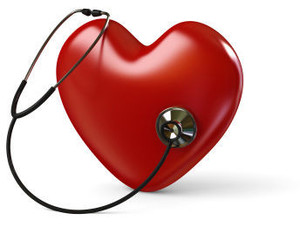In Portugal, the use of medicines for cardiovascular system increased nearly two-fold between 2000 and 2010. As such, over a quarter of the overall expenditure on medicines during these years went towards the treatment of cardiovascular issues [1]. However, it is possible that there may be room for cost saving on these medicines through increased uptake of generic and essential medicines. A recent study by Gama et al. has outlined the trends in outpatient cardiovascular medicine use in Portugal between 2004 and 2012, with focus on the uptake of generic and essential medicines [2].
The team from the University of Porto Medical School, Portugal, used data obtained from a national database, the Pharmacy Sales Information System of the Centre for Health Evaluation & Research (Centro de Estudos e Avaliação em Saúde, CEFAR) of the Portuguese National Association of Pharmacies. This revealed that, between 2004−2012, the overall consumption of medicines for the prevention and treatment of cardiovascular diseases doubled, to reach a total of almost 2,400 million defined daily doses (DDD) in 2012. During this time, there was a substantial increase in the use of generic and essential medicines.
Generics use increased from under 15% of DDD consumption in 2004, to representing 43.6% in 2012. Essential medicines increased from approximately 30% in 2004, to 39.9% of DDD consumption in 2012. This move towards an increased use of these generic and essential medicines has enabled substantial savings to be made. Although medicines use has gone up, expenditure on these medicines went down.
However, during this time, the use of fixed-dose combinations, which was just over 70 million DDD in 2004 for ACE inhibitors and ARB, increased to 128.3 million DDD of ACE inhibitors and 252.6 million DDD for ARB, in 2012. Generally, such fixed-dose combinations are expensive and can be substituted for by less-costly essential medicines. As such, additional healthcare funds could have been saved here.
Such monitoring of the patterns of medicines consumption, with particular focus on the uptake of generic medicines, will aid in planning strategies related to health resources. The evident increase in use of generic and essential medicines is already making a more efficient use of resources in Portugal. There is still the possibility of improvement and a more rational use of fixed-dose combinations could help free-up additional healthcare funds.
Conflict of interest
Authors of the research paper [4] were employed at the Centre for Health Evaluation & Research (CEFAR) of the National Association of Pharmacies (ANF) when the study was conducted, and have no conflict of interest to declare.
Related article
Portugal saves money with increased use of cardiovascular generics
References
1. Infarmed. Furtado C. Medicamentos do aparelho cardiovascular: uma análise dos padrões de utilização e despesa em Portugal Continental entre 2000 e 2011. 2013 [homepage on the Internet]. [cited 2018 Apr 6]. Available from: http://www.infarmed.pt/documents/15786/17838/Relatorio_ApCardiovascular.pdf/96b42ac9-2e4e-4992-91a5-b6de3e0c25a4
2. Gama H, Torre C , Guerreiro J-P , Azevedo A, Costa S, Lunet N. Use of generic and essential medicines for prevention and treatment of cardiovascular diseases in Portugal. BMC Health Services Research. 2017;17:449.
Permission granted to reproduce for personal and non-commercial use only. All other reproduction, copy or reprinting of all or part of any ‘Content’ found on this website is strictly prohibited without the prior consent of the publisher. Contact the publisher to obtain permission before redistributing.
Copyright – Unless otherwise stated all contents of this website are © 2018 Pro Pharma Communications International. All Rights Reserved.








 0
0











Post your comment